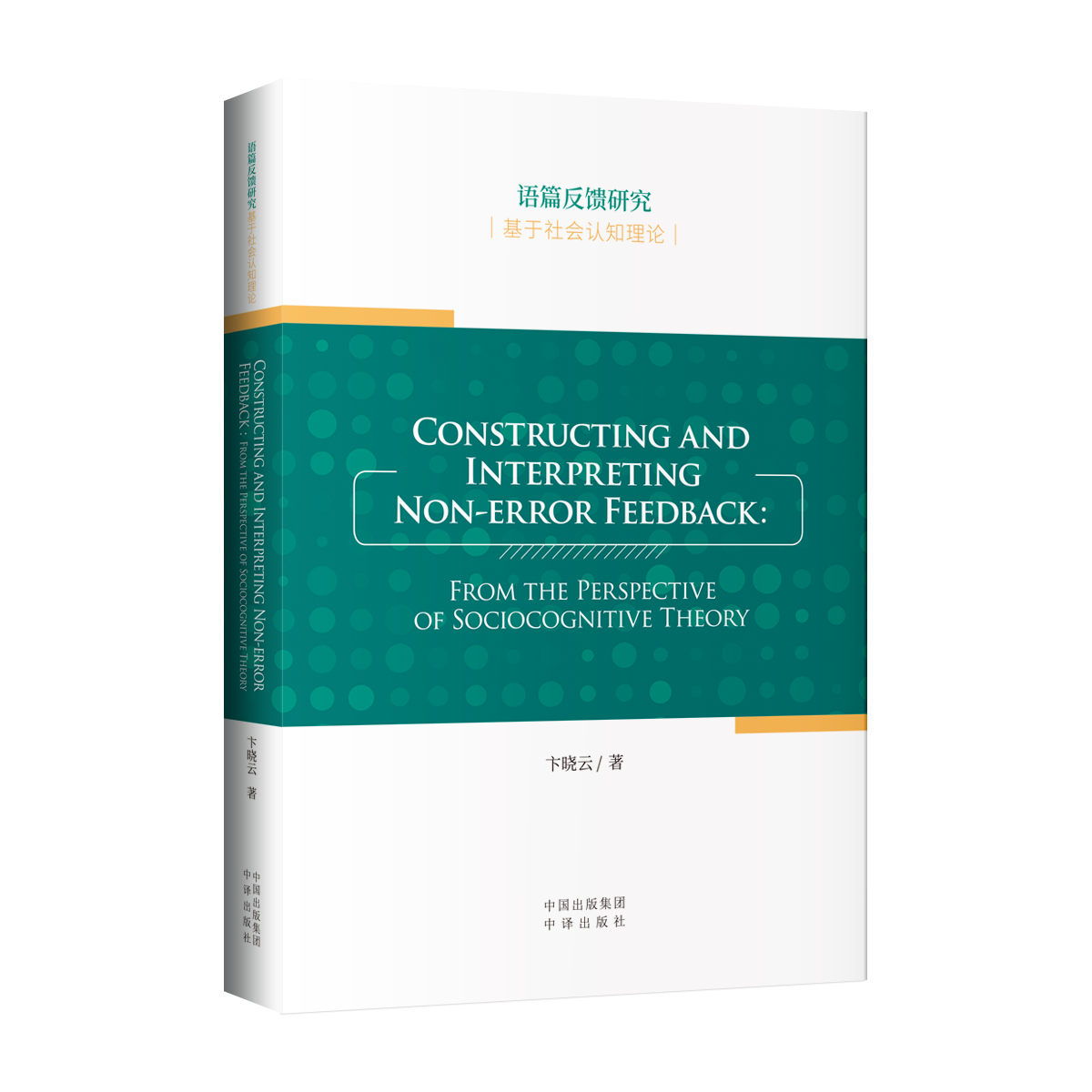
出版社: 中译
原售价: 78.00
折扣价: 46.80
折扣购买: 语篇反馈研究(基于社会认知理论)(英文版)
ISBN: 9787500172468

卞晓云,任教于中央财经大学外国语学院,研究方向为外语写作教学、教学法、教师认知、教师发展。北京外国语大学文秋芳教授“产出导向法”虚拟专业学习共同体成员,曾参与第八批中国外语教育基金项目。
Teacher written feedback on second language (L2) students’writing (hereinafter mainly referred to as “teacher feedback” for short) has been a subject of researchers’interest since the 1980s (Bitchener & Ferris, 2012; Ferris, 2003). However, research into it has mainly focused on the surface level errors of student writing and there has only been a small body of research addressing teacher feedback on non-error issues such as the organization and content of student writing (Ferris & Hedgcock, 2014; Goldstein, 2001, 2006, 2016). This book directs its attention to non-error feedback and prioritizes Chinese EFL (English-as-a-Foreign-Language) teachers’ feedback on the argumentation-related issues in expository writing (hereinafter referred to as feedback on “expository argumentation” or “EA feedback” for short, e.g., teacher feedback on supporting evidence). By defining teacher feedback from the sociocognitive perspective and focusing on EA feedback, this book reports a study on the process during which teachers construct EA feedback and students interpret that EA feedback (hereinafter mainly referred to as “the feedback-and-interpretation process” for short). Reporting this study in this book aims to extend the empirical, theoretical, and knowledge base of teacher written feedback. Specifically, the following three research questions (hereinafter referred to as “RQ(s)” for short) were addressed in the study this book reports: ● RQ1: When constructing feedback, how does the Chinese EFL teacher decide what EA concerns to focus on and how to deliver EA feedback? ● RQ2: When processing the teacher’s EA feedback, how does the Chinese EFL student decide the extent to which it is accepted and incorporated? ● RQ3: According to the student and the teacher, to what extent does the process of constructing and interpreting EA feedback help students improve, if it is considered effective? This introductory chapter provides an orientation to the study this book reports. It begins with stating the research problem (1.1). Then, the practical, theoretical, and empirical rationales for the three RQs are explained (1.2.1– 1.2.3). Following the rationales that motivated the RQs is a description of the research methodology (1.3), an explanation of the significance of the study this book reports (1.4), and an outline of the organization of this book and the composition of chapters (1.5) 1.本书将提供中国英语写作教学环境视角,充实二语写作教师非纠错性的语篇反馈方面的研究。 本书有其独到的实际应用价值。随着时代的发展,尽管智能/自动反馈系统已经取得了很大的进步,但该系统主要提供的反馈还是为和语言有关的纠错性反馈,怎样能更好地提供非纠错性的语篇反馈还是该系统升级改造的一大方向。本书所探讨的教师如何提供非纠错性语篇反馈、学生如何解读加工非纠错性语篇反馈将为人工智能系统的改进和完善提供思路。 本书将为外语写作教师、反馈领域的研究者、计算机反馈开发者提供反馈实践、研究和开发方面的启示。